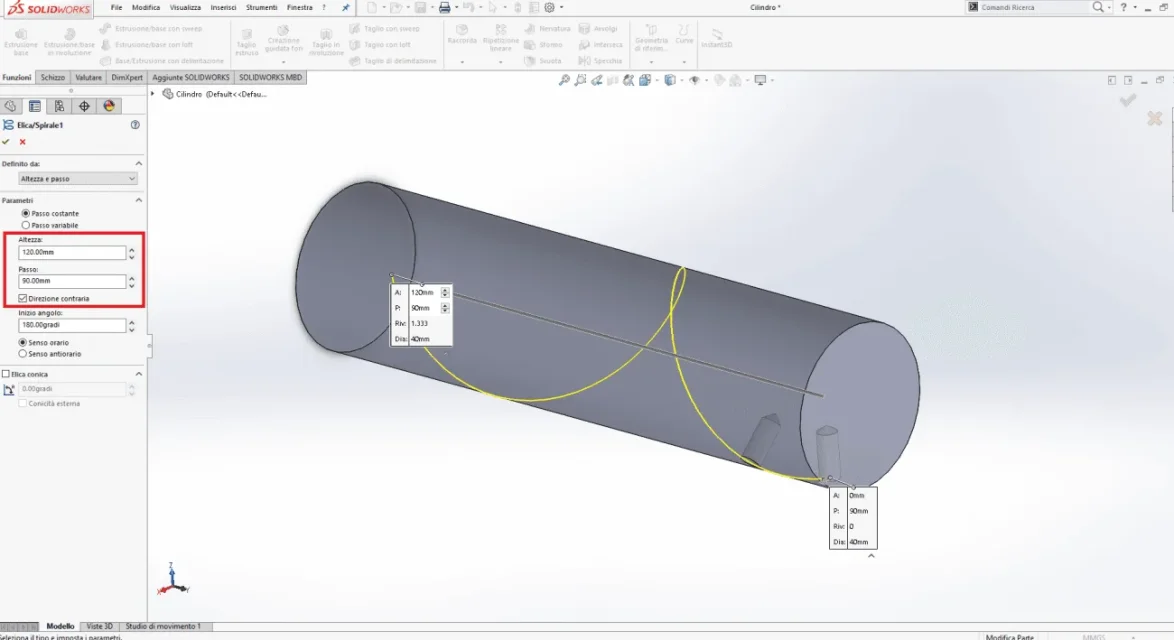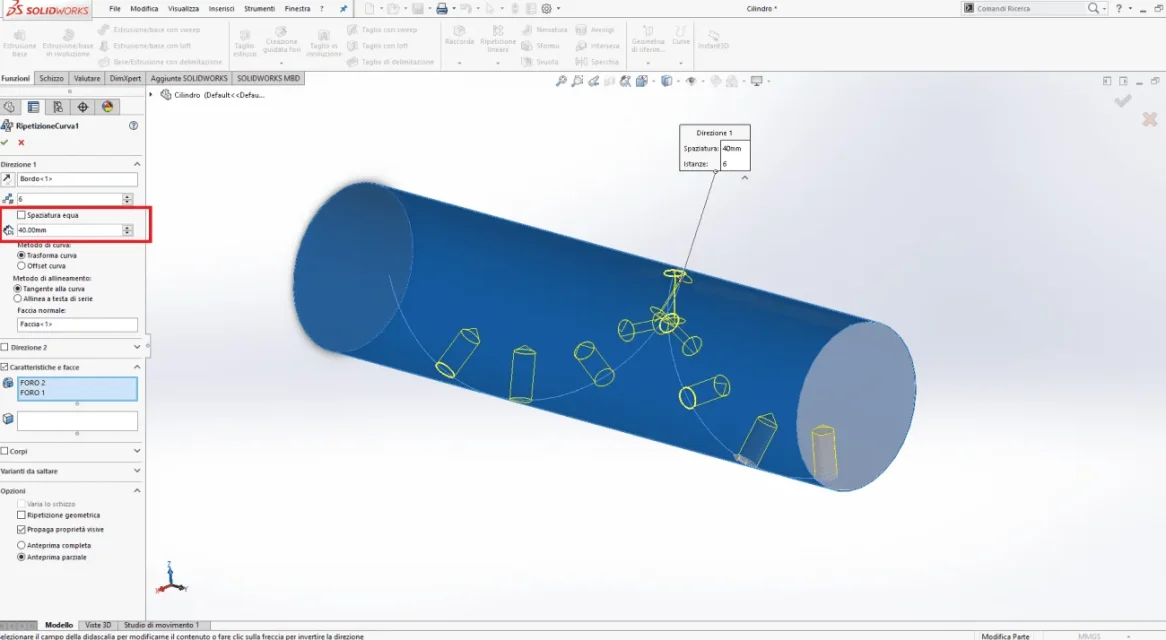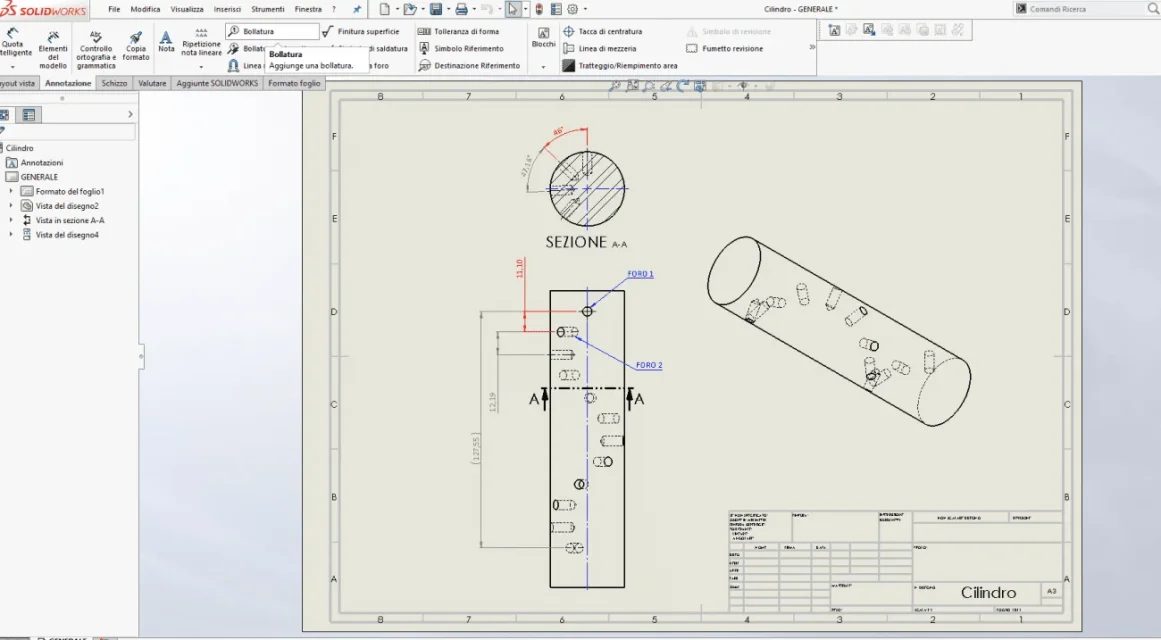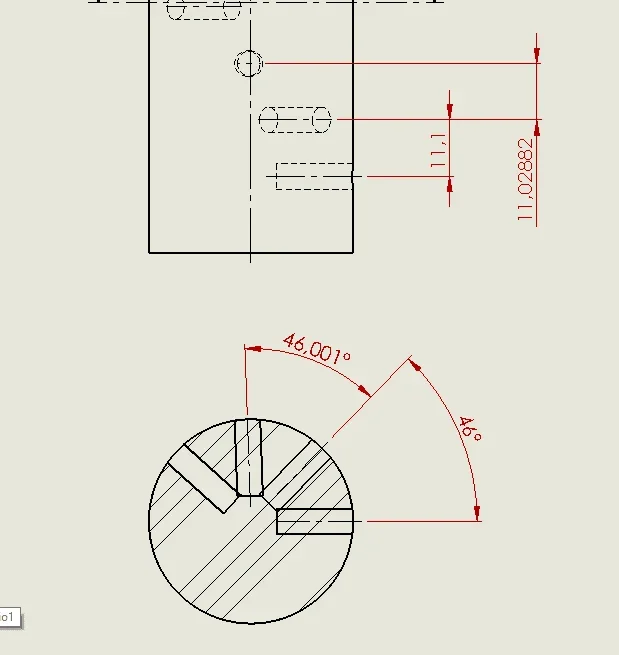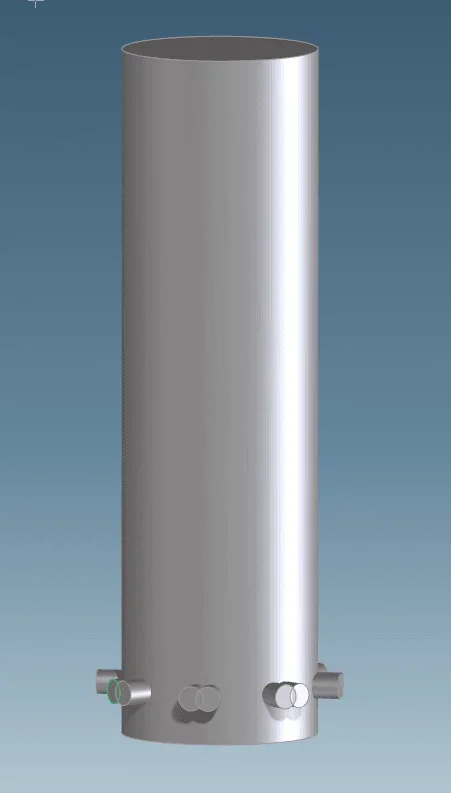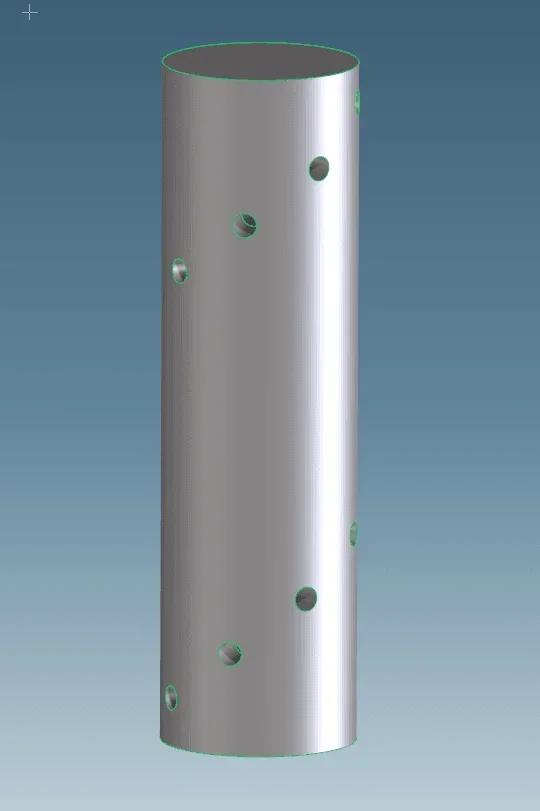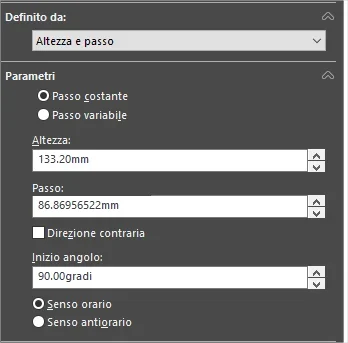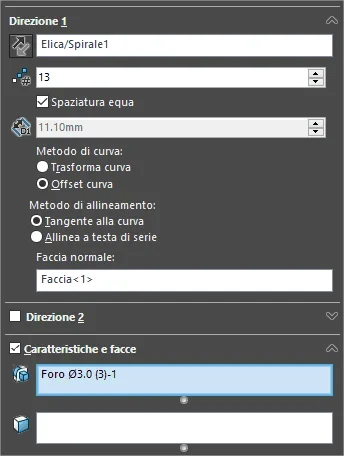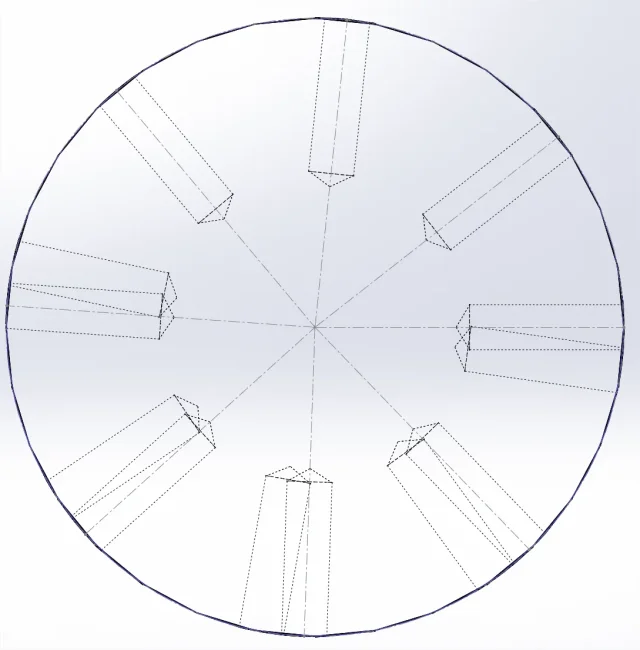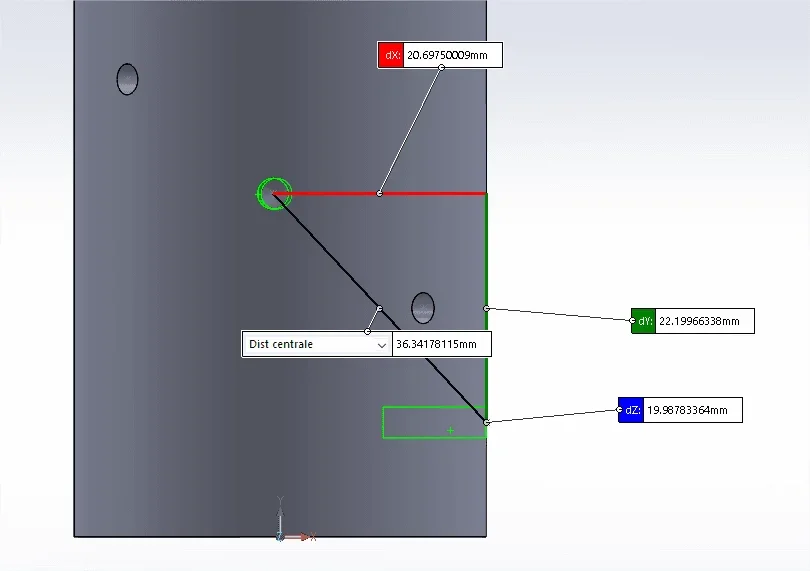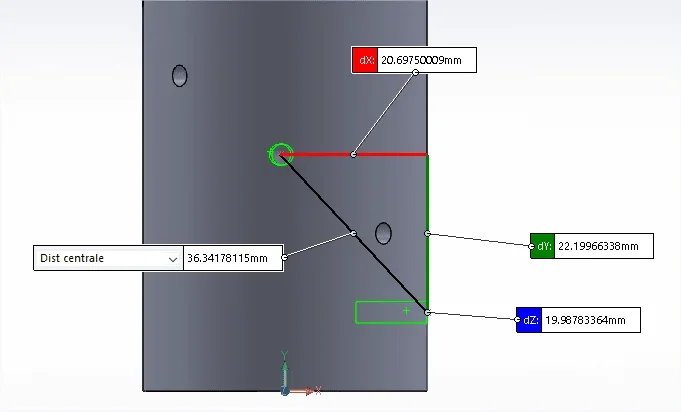passer1214
Guest
Good morning.
I have to make a cylinder island40 which has various holes along a certain distance (holes must cover at least 120mm), rotated around its surface: the peculiarity lies in the fact that the holes must be distant 11,1 and everyone must be inclined to 46° degrees compared to the next and previous.
to build it I have created two floors to place the first 2 holes is so be sure to put them at the right distance and inclination between them; after I thought of using the repetition command of the curve (never used by me until now), I created a propeller and everything worked.
Now I have a problem: going to quote the various holes, those of the repetition are packed: the 46° degrees turn out to me 47,12° and the distance instead of 11,1 becomes 12,19: going to change '' to good' (i.e. changing random values of the propeller and the repetition of the curve trying to approach me as much as possible to the desired odds) I spent a lot of time to find myself however with values with too much margin of error.
My question is: how do I understand that values put in the propeller or in the repetition of the curve? I press that in mathematics are quite poor, given my starting values are formulas that allow me to translate those odds into the functions of solidworks?
the values that I must respect are ø40 of the cylinder, the distance 11,1 of the holes and their inclination of 46° always regarding them. I have attached some files in the hope of being clearer about my quaint
I have to make a cylinder island40 which has various holes along a certain distance (holes must cover at least 120mm), rotated around its surface: the peculiarity lies in the fact that the holes must be distant 11,1 and everyone must be inclined to 46° degrees compared to the next and previous.
to build it I have created two floors to place the first 2 holes is so be sure to put them at the right distance and inclination between them; after I thought of using the repetition command of the curve (never used by me until now), I created a propeller and everything worked.
Now I have a problem: going to quote the various holes, those of the repetition are packed: the 46° degrees turn out to me 47,12° and the distance instead of 11,1 becomes 12,19: going to change '' to good' (i.e. changing random values of the propeller and the repetition of the curve trying to approach me as much as possible to the desired odds) I spent a lot of time to find myself however with values with too much margin of error.
My question is: how do I understand that values put in the propeller or in the repetition of the curve? I press that in mathematics are quite poor, given my starting values are formulas that allow me to translate those odds into the functions of solidworks?
the values that I must respect are ø40 of the cylinder, the distance 11,1 of the holes and their inclination of 46° always regarding them. I have attached some files in the hope of being clearer about my quaint

